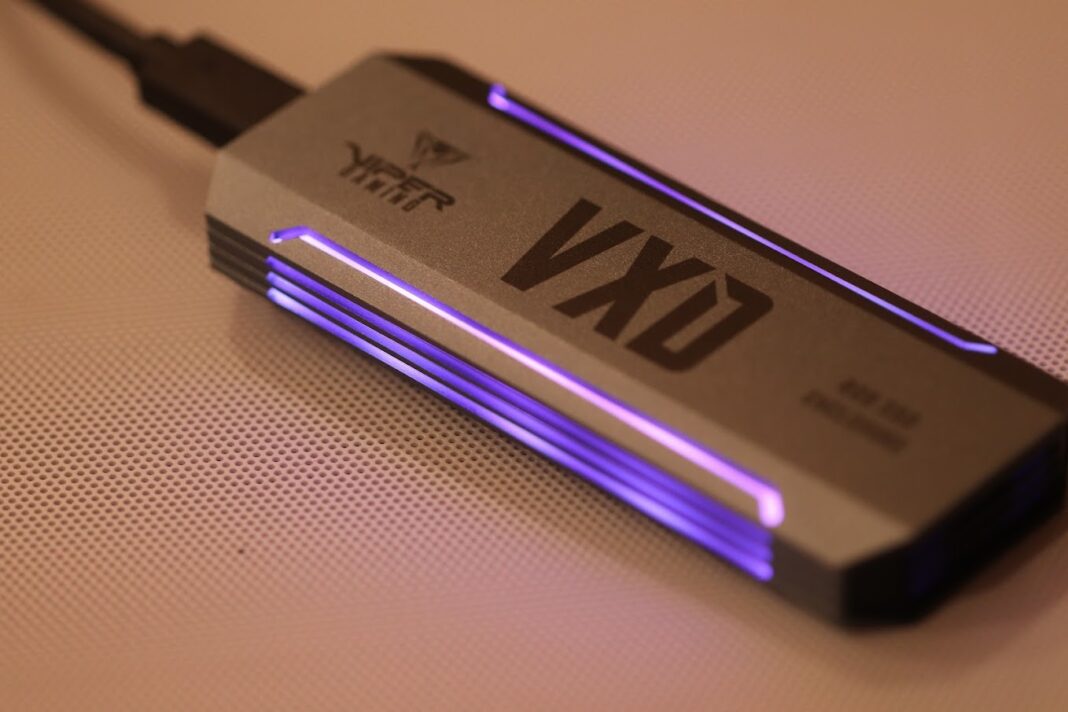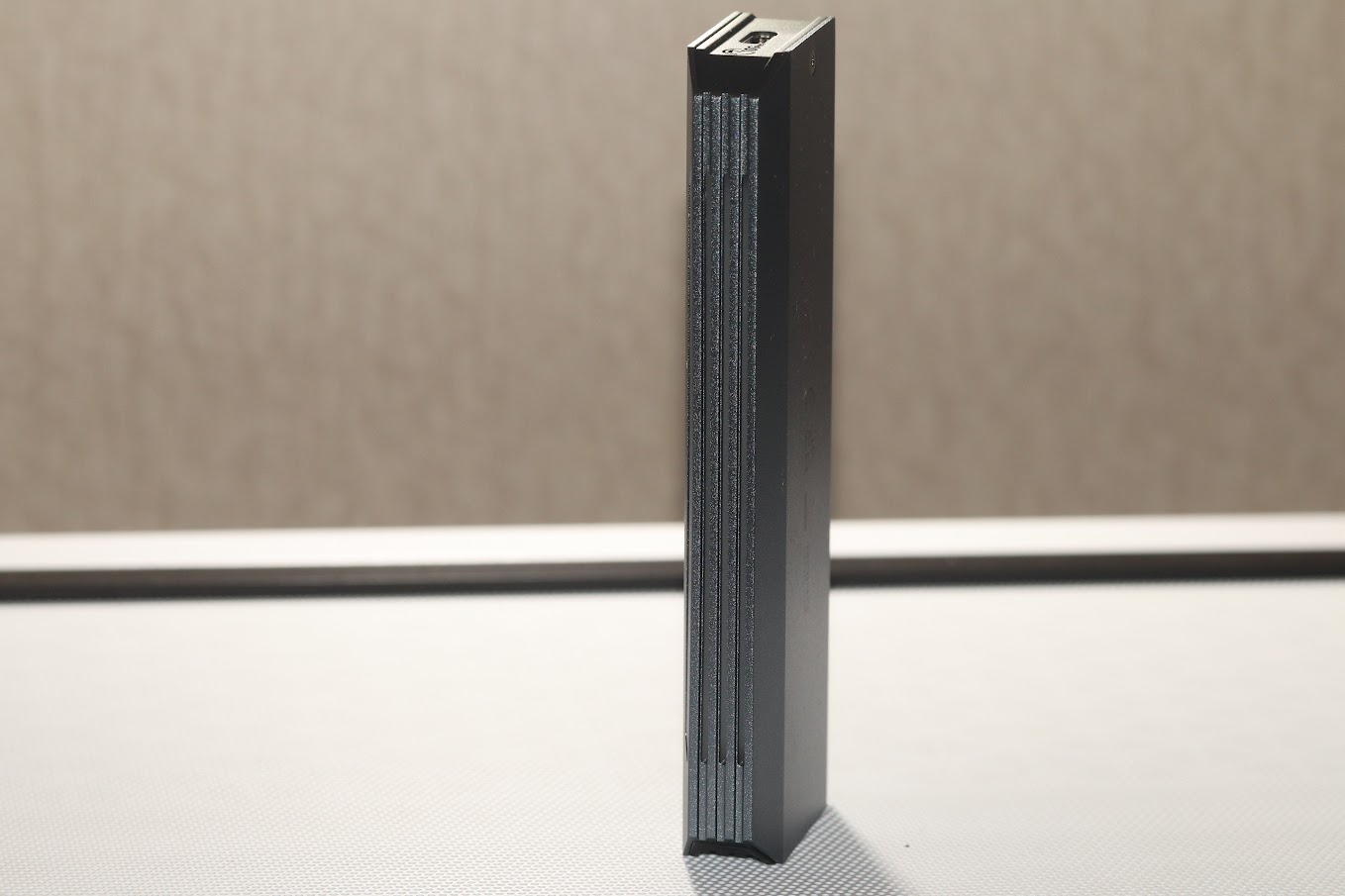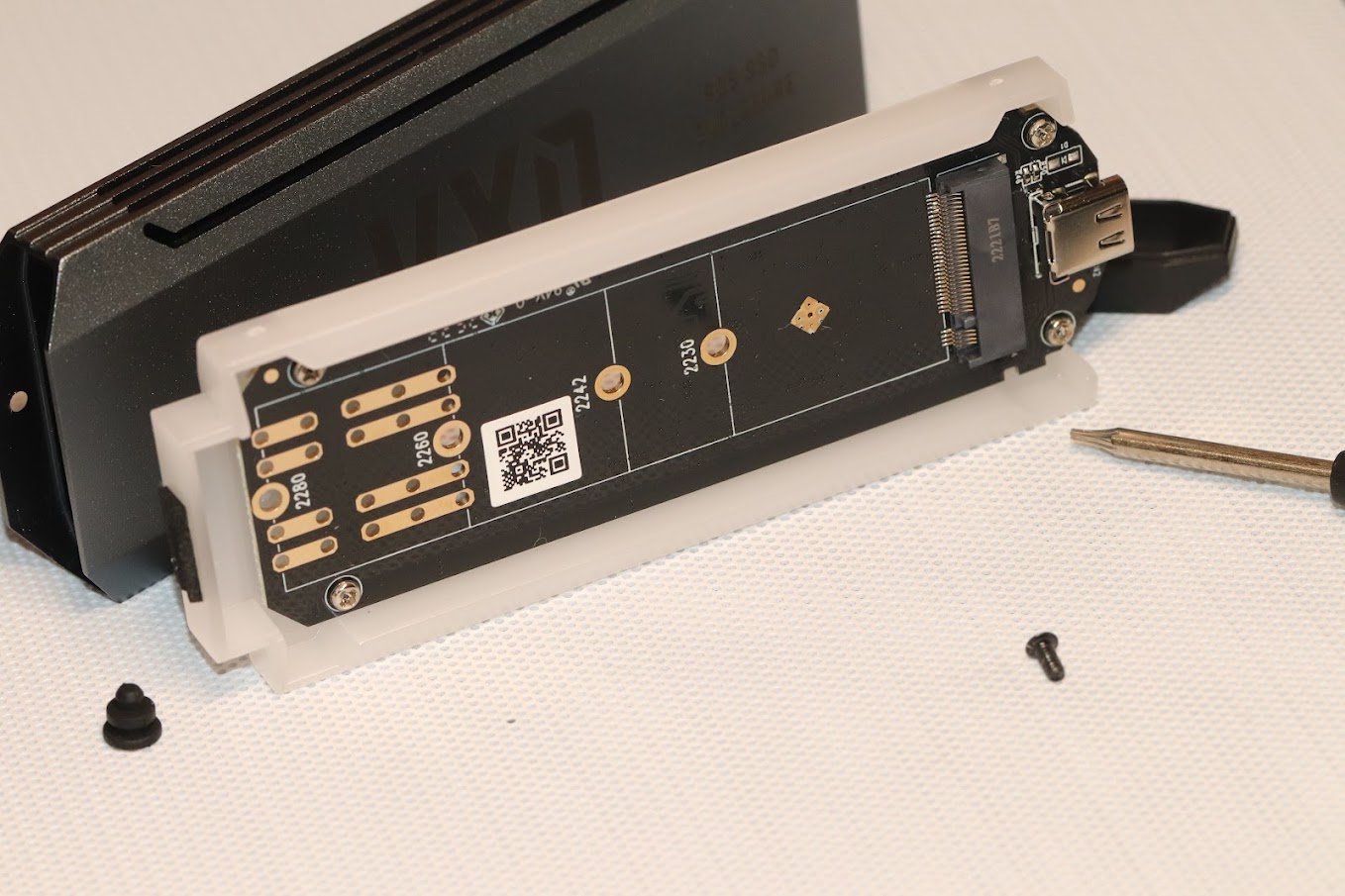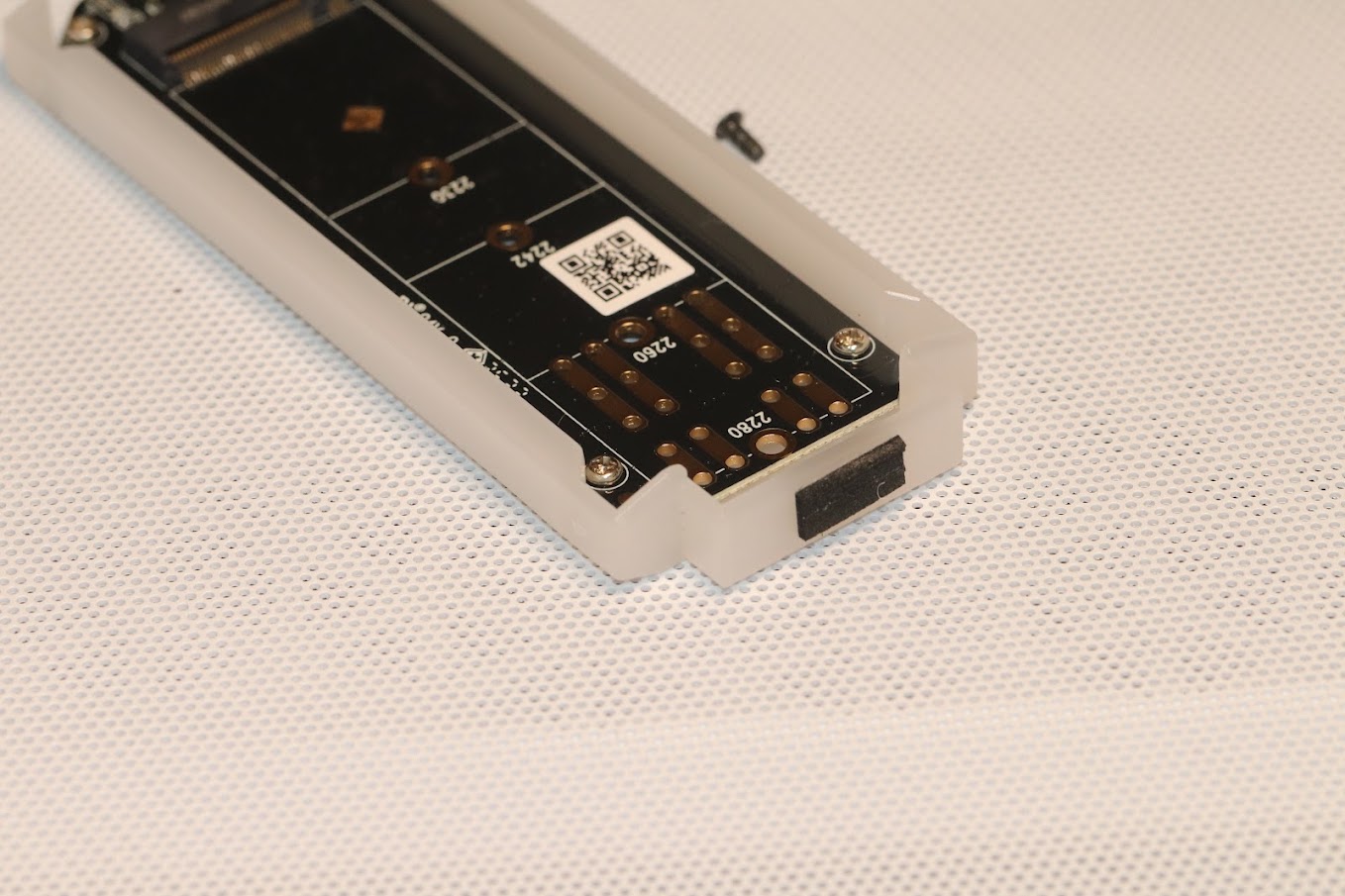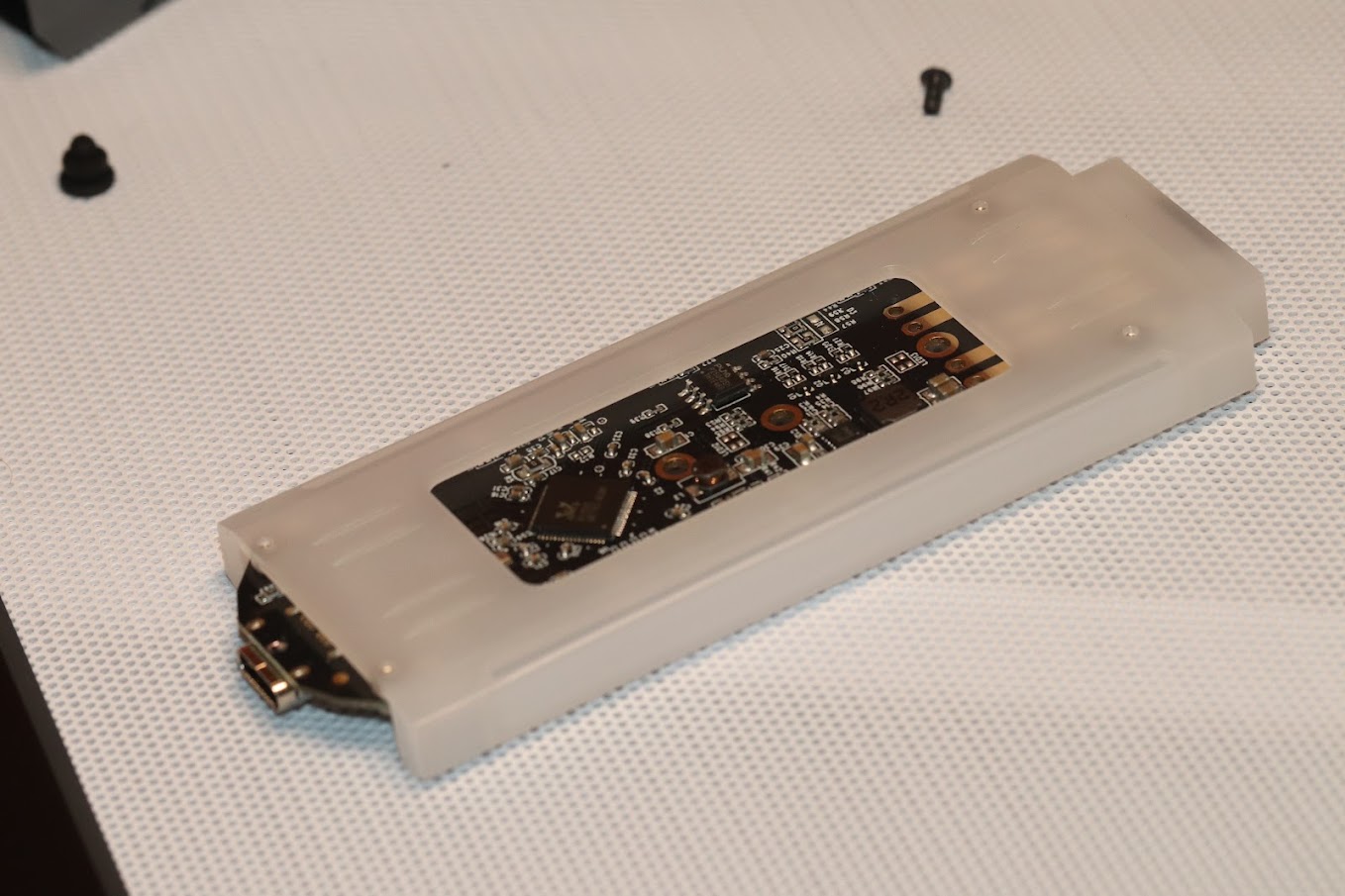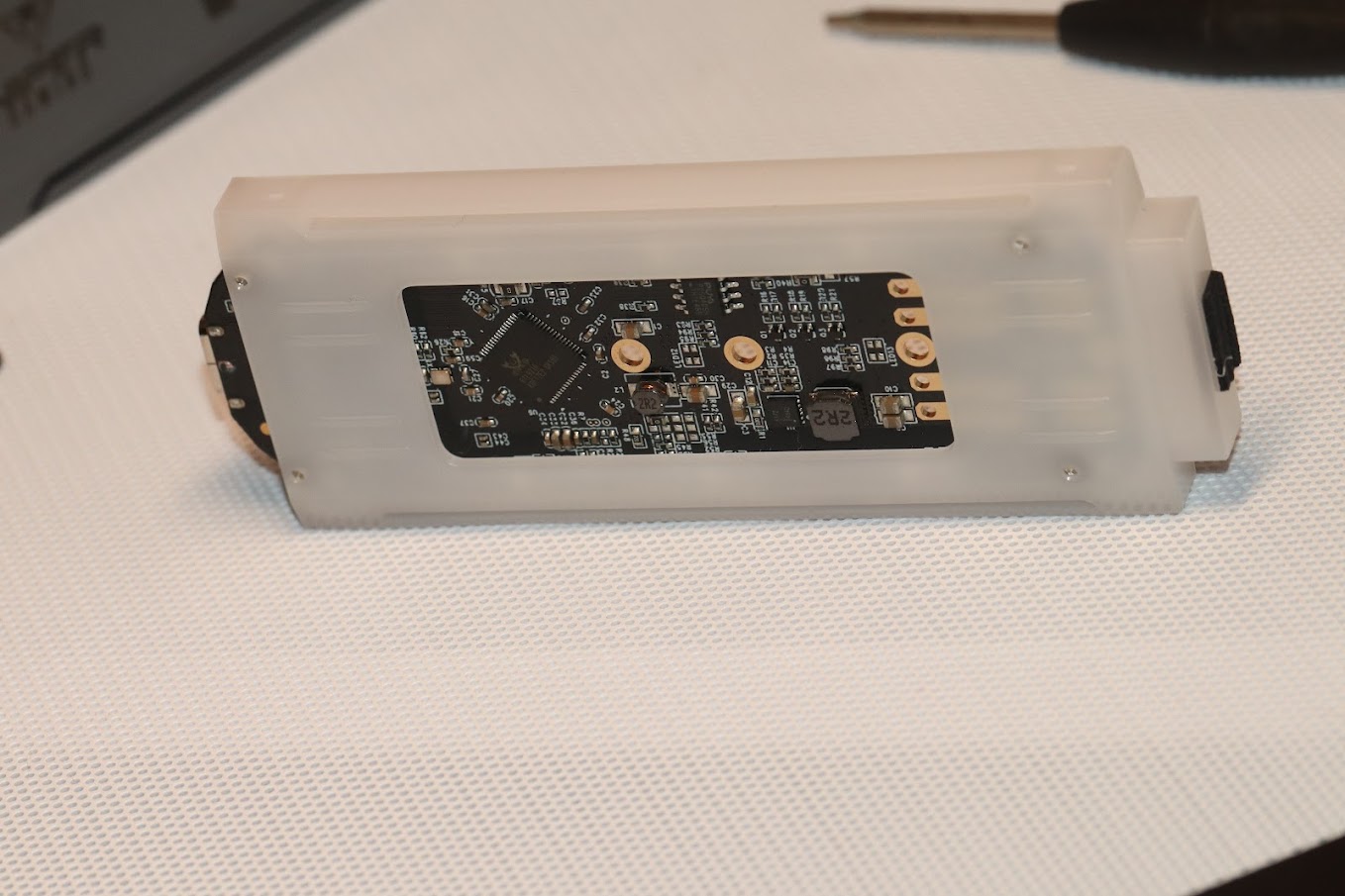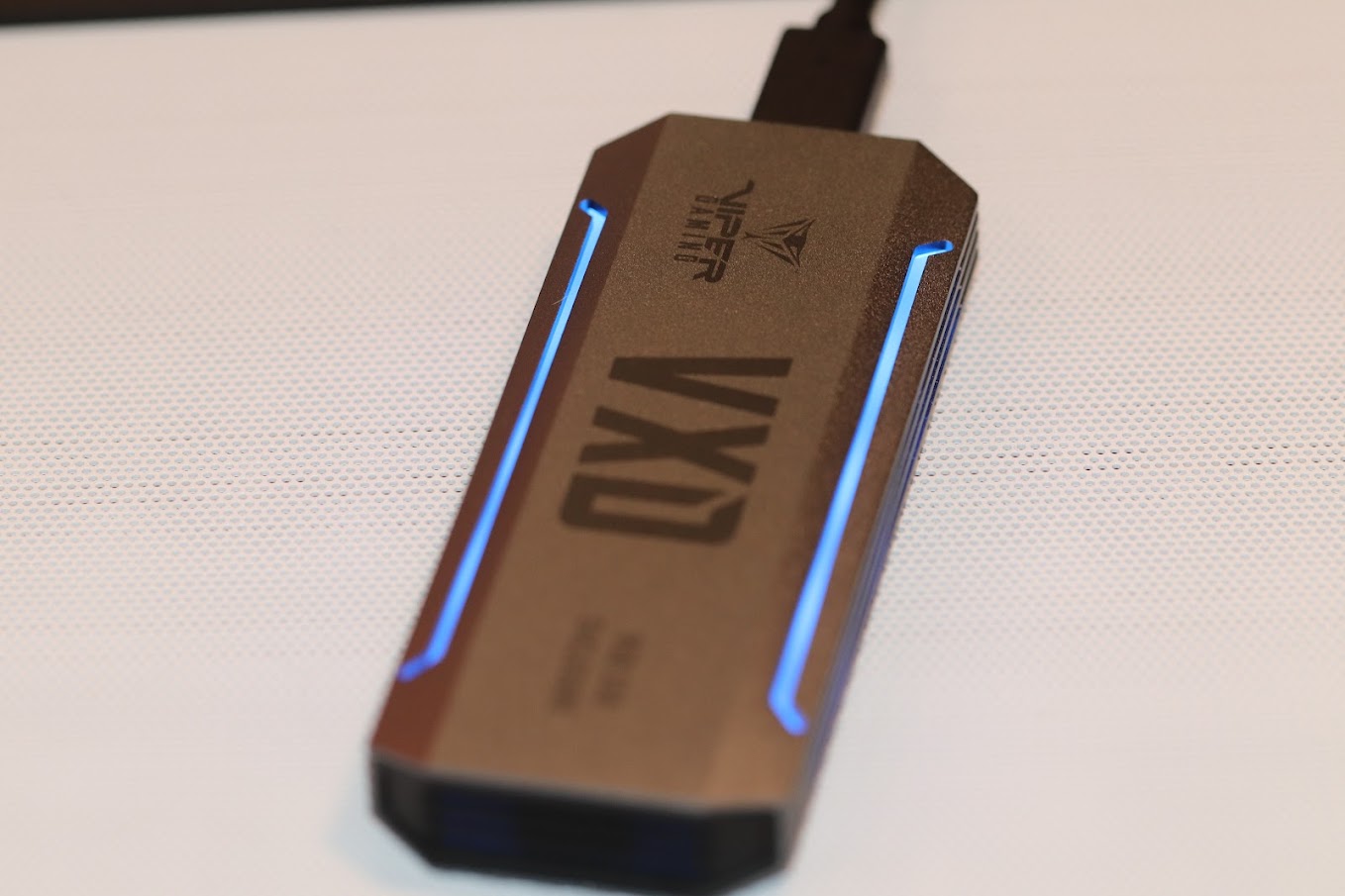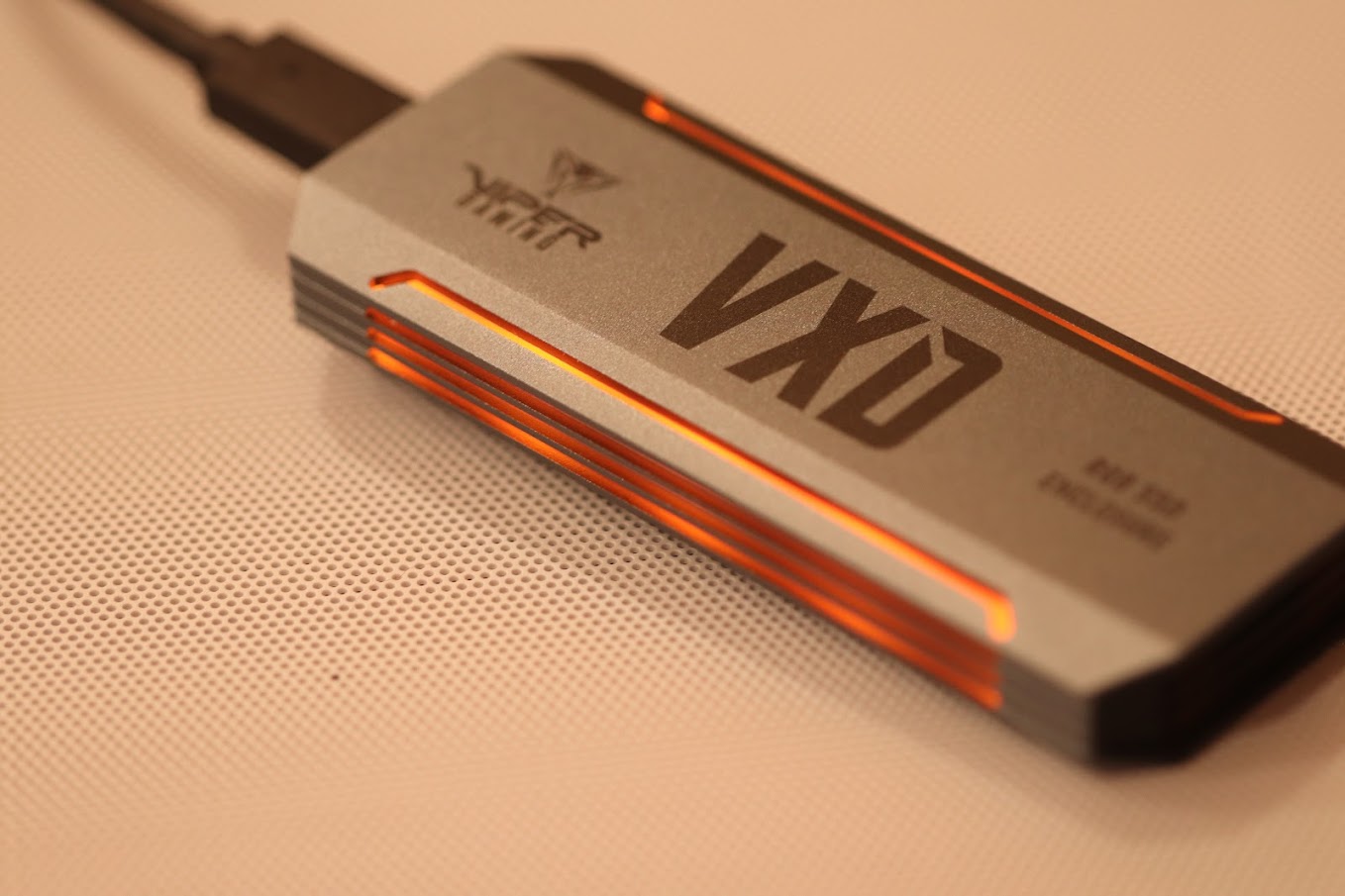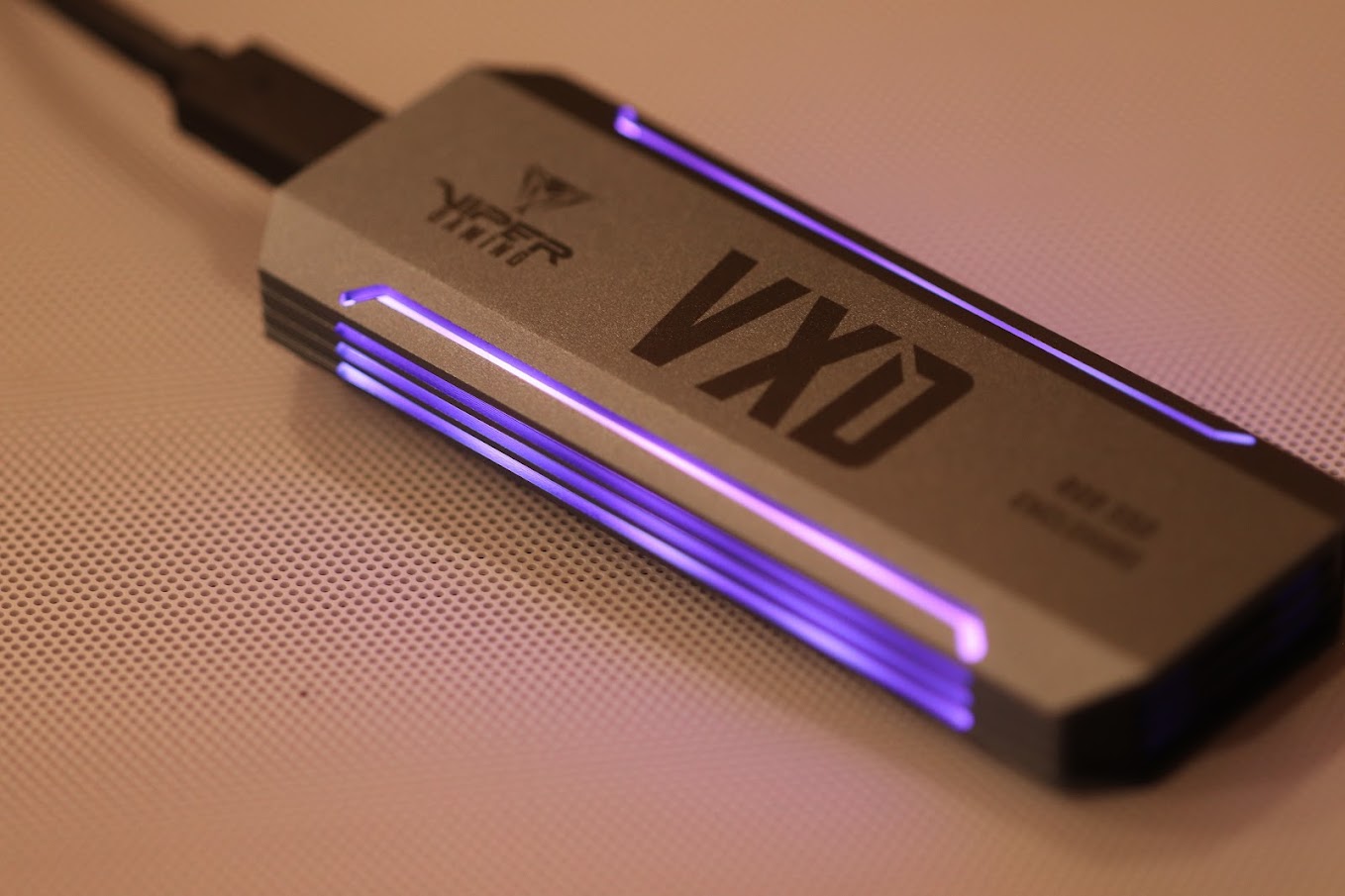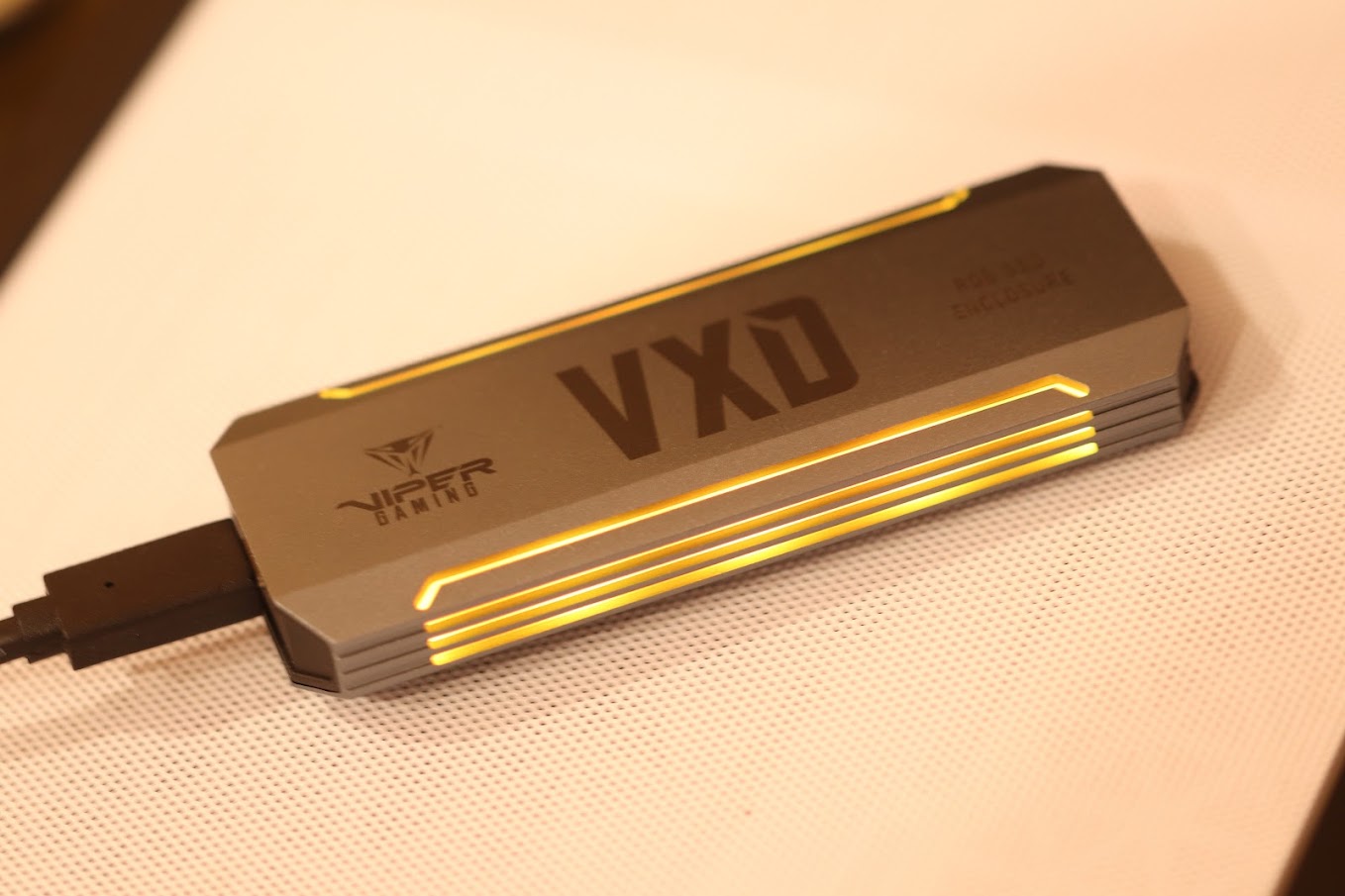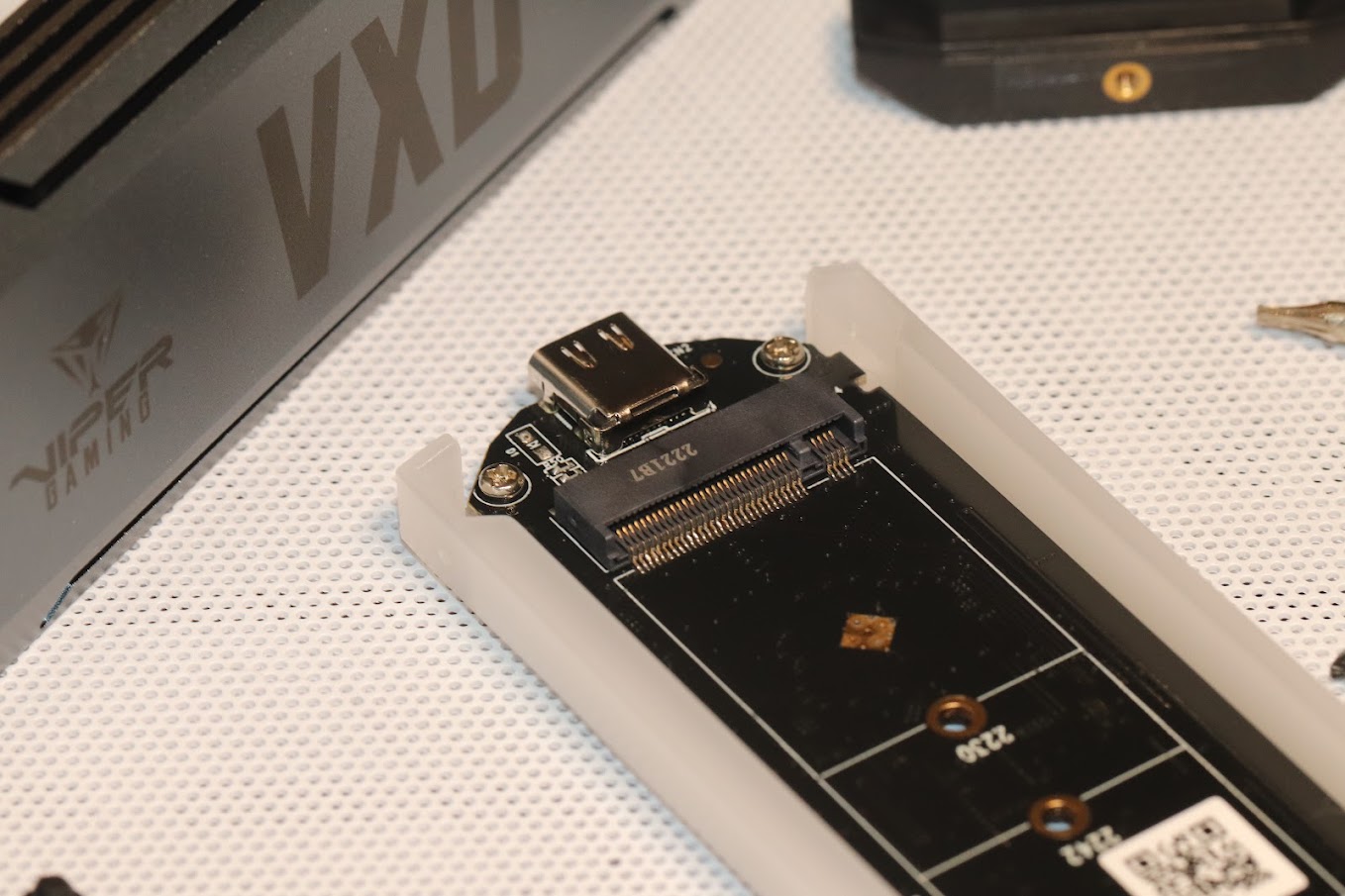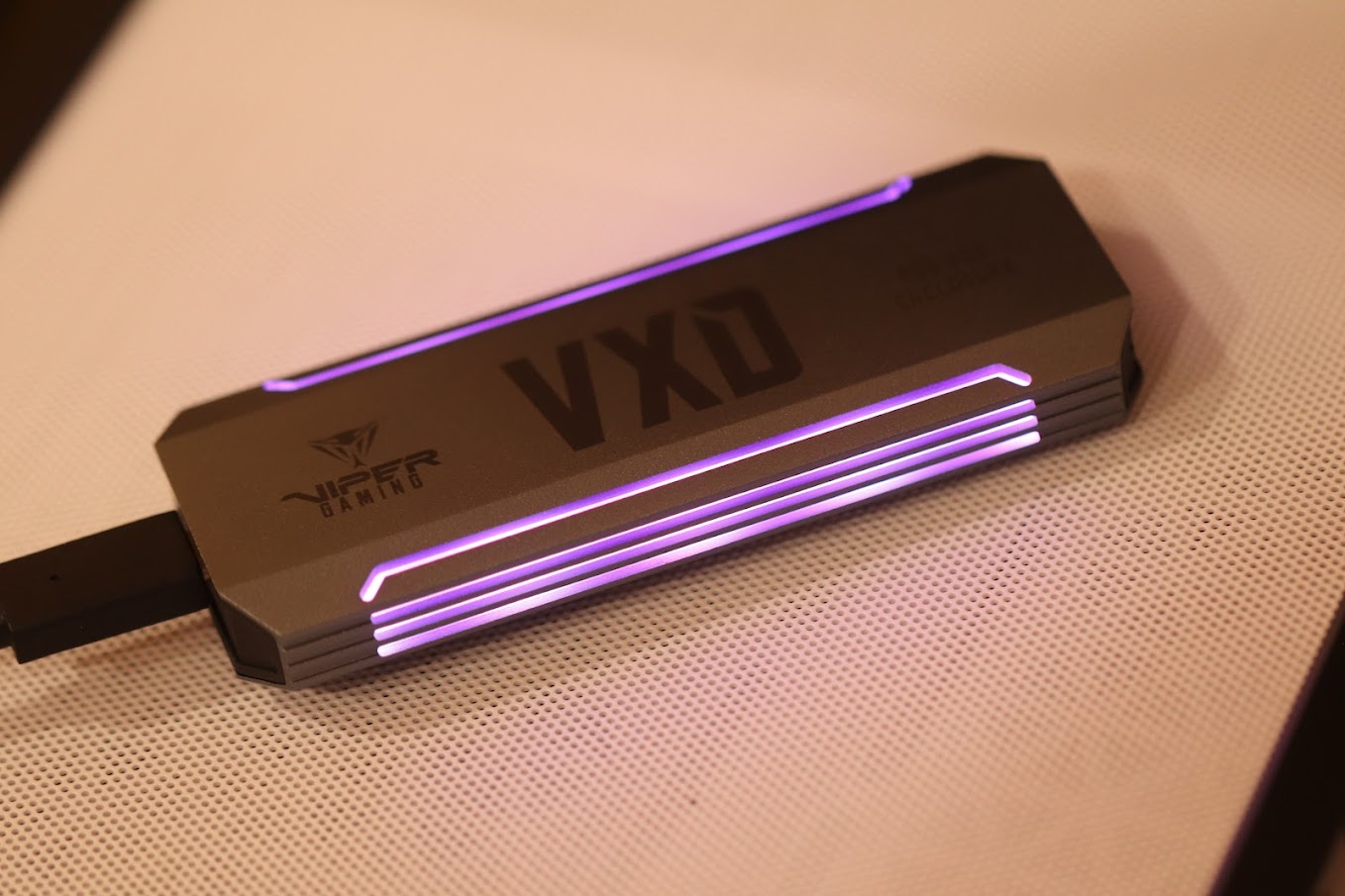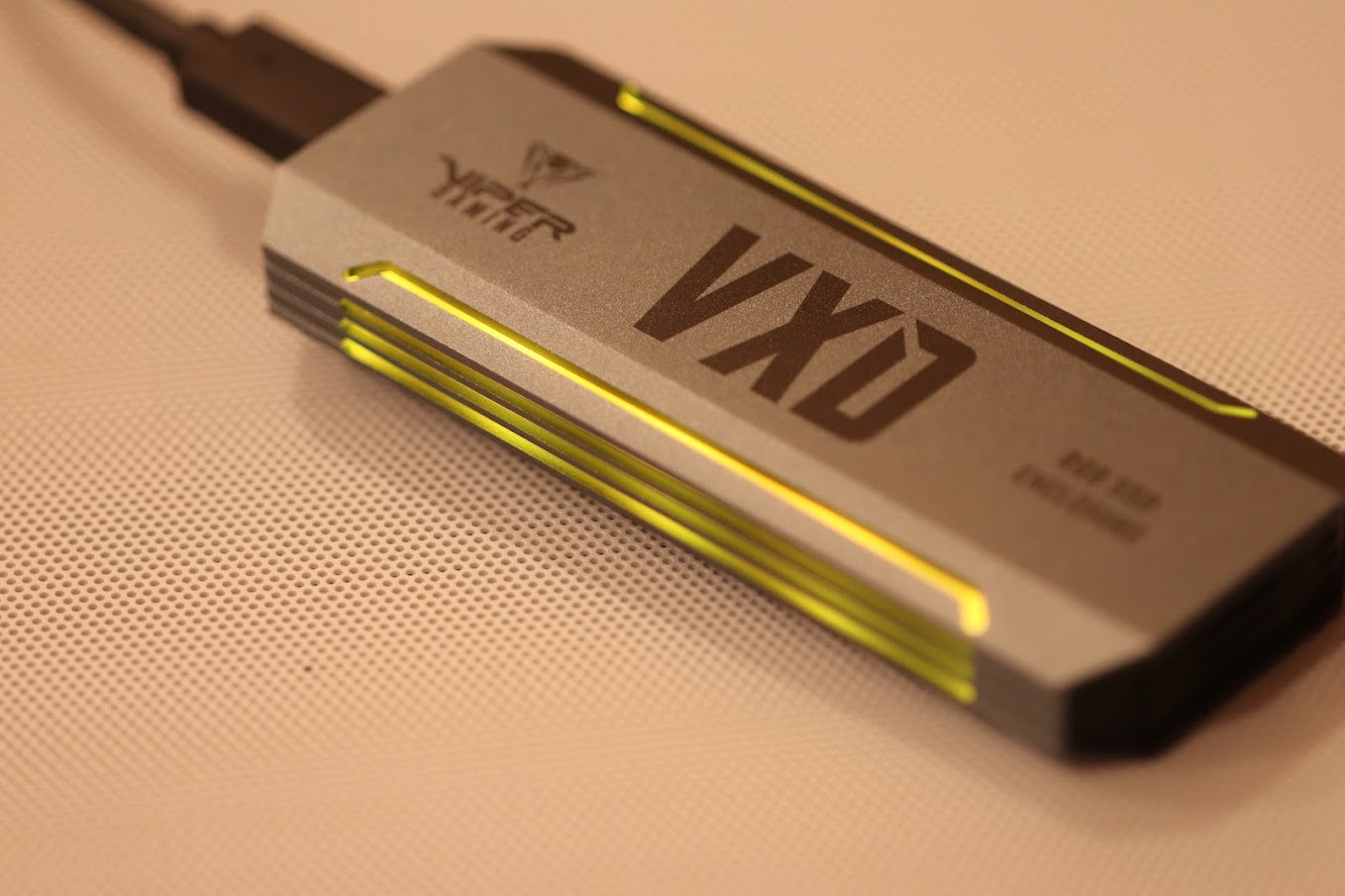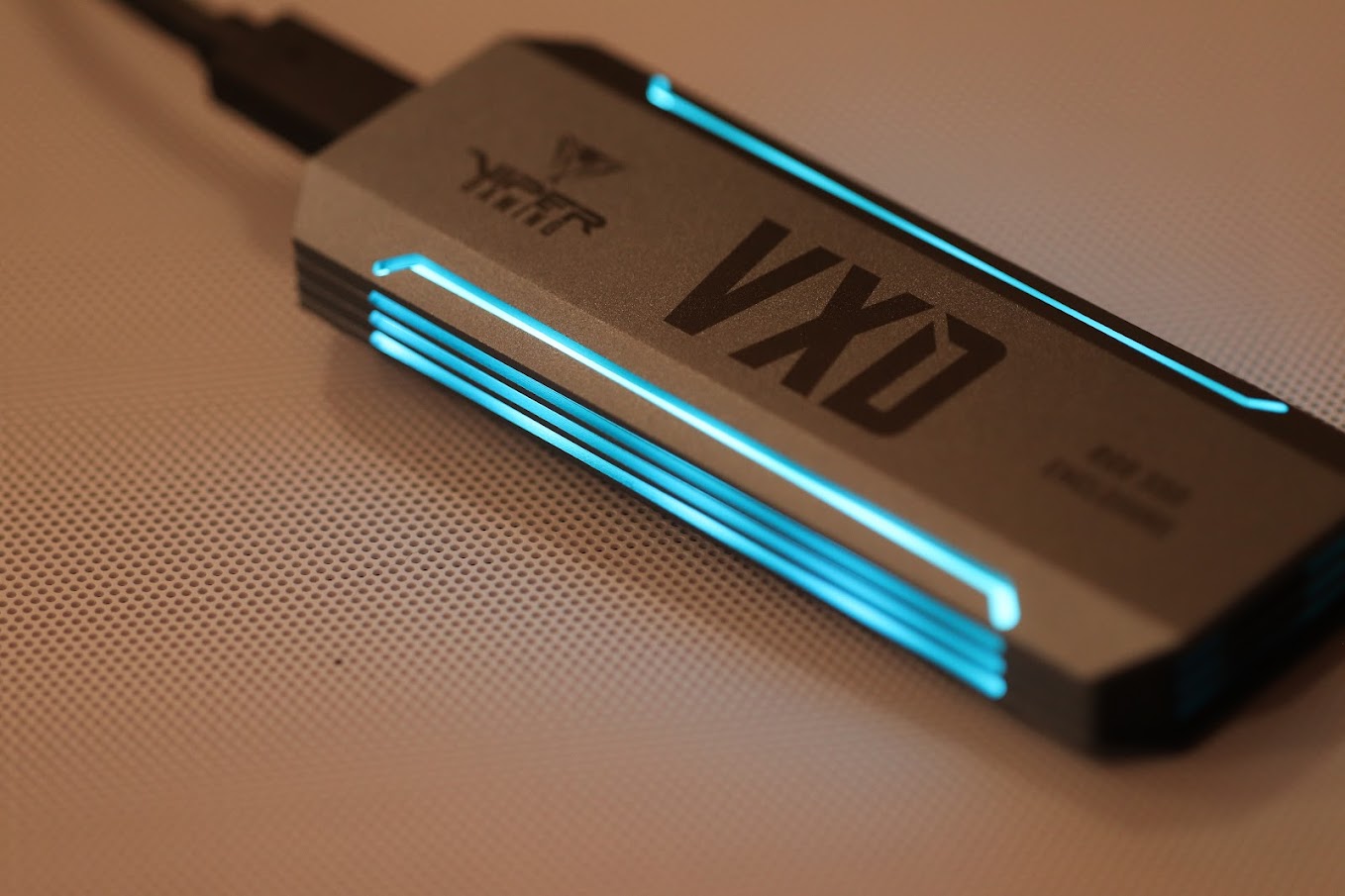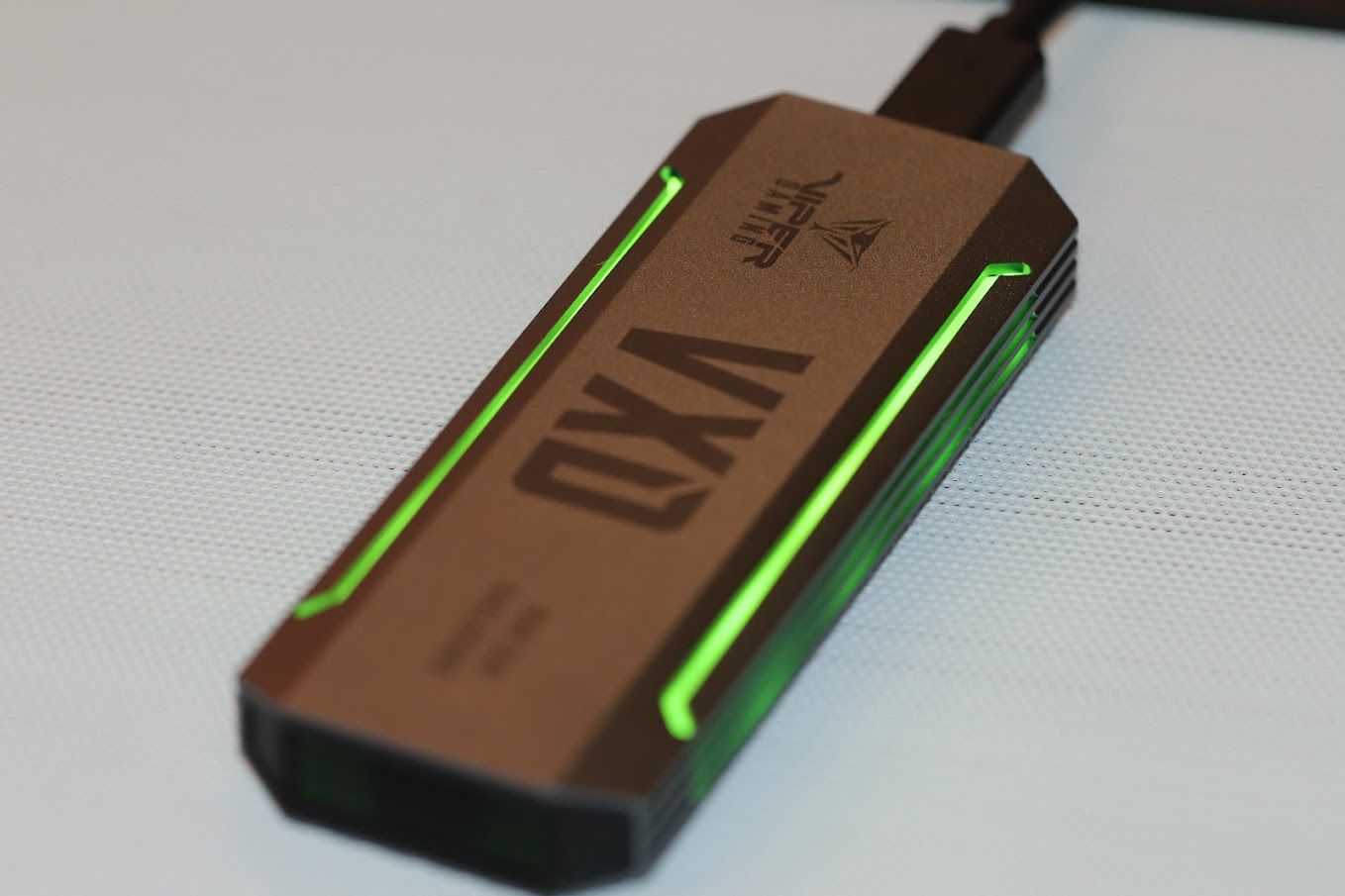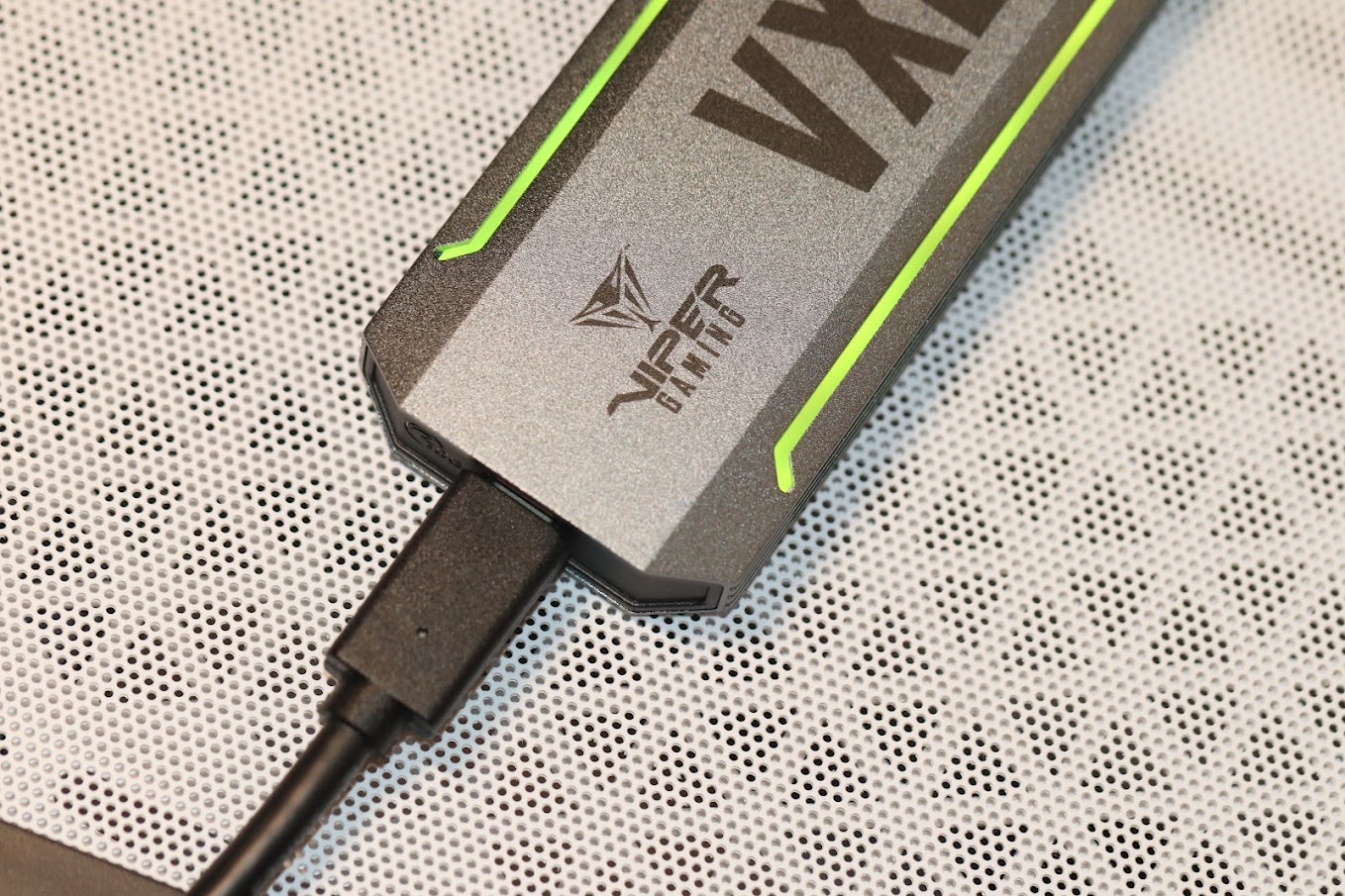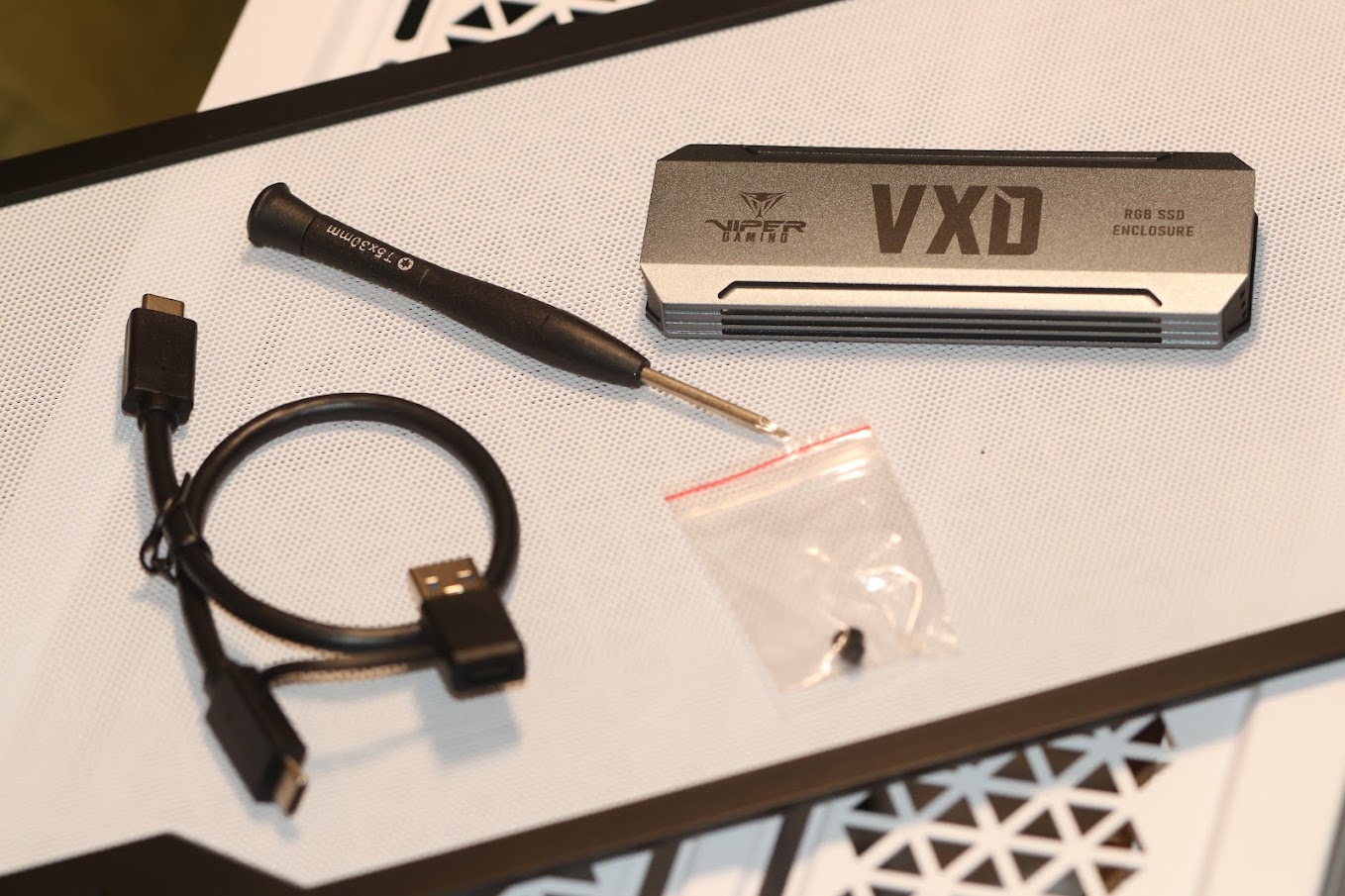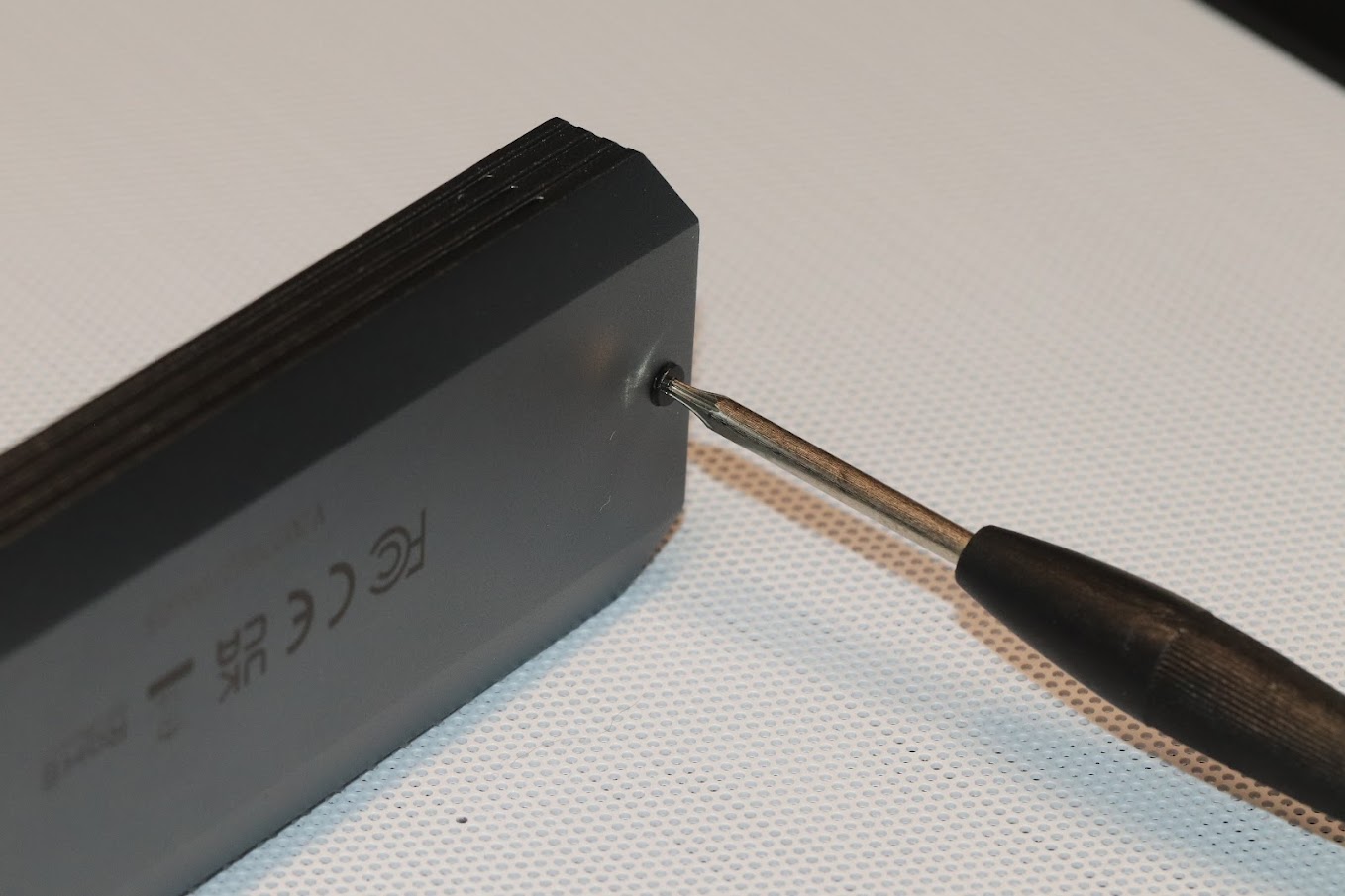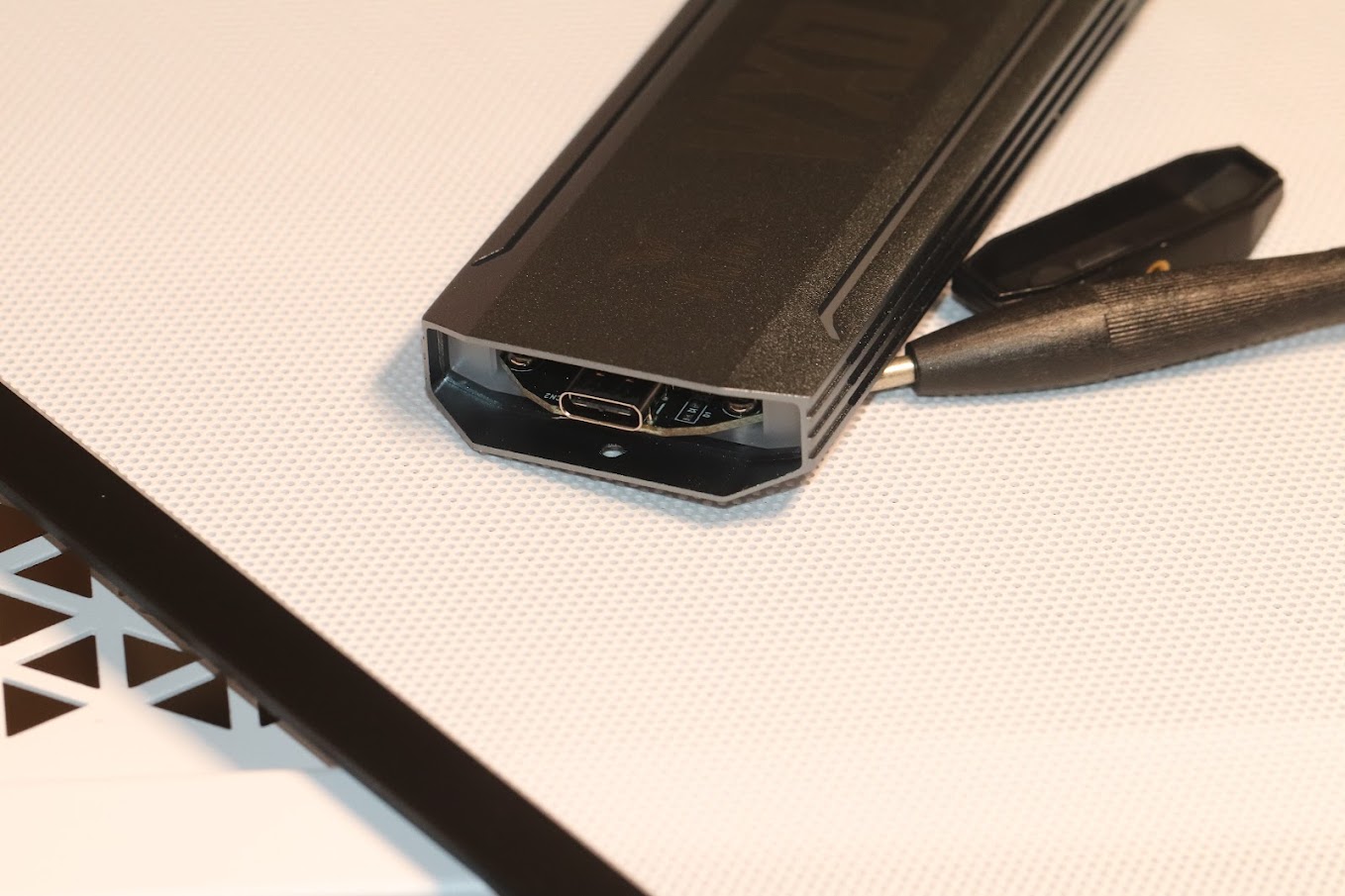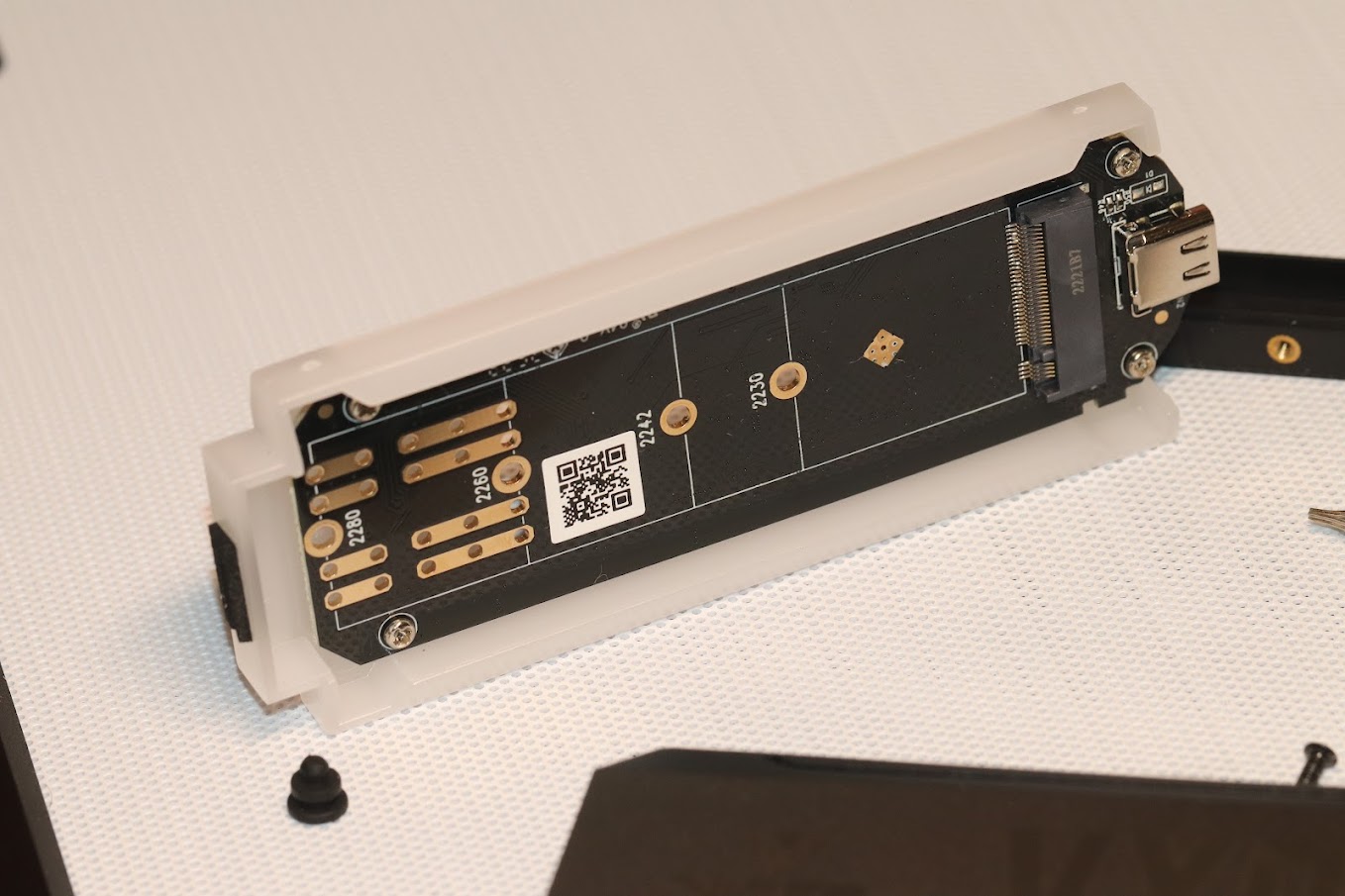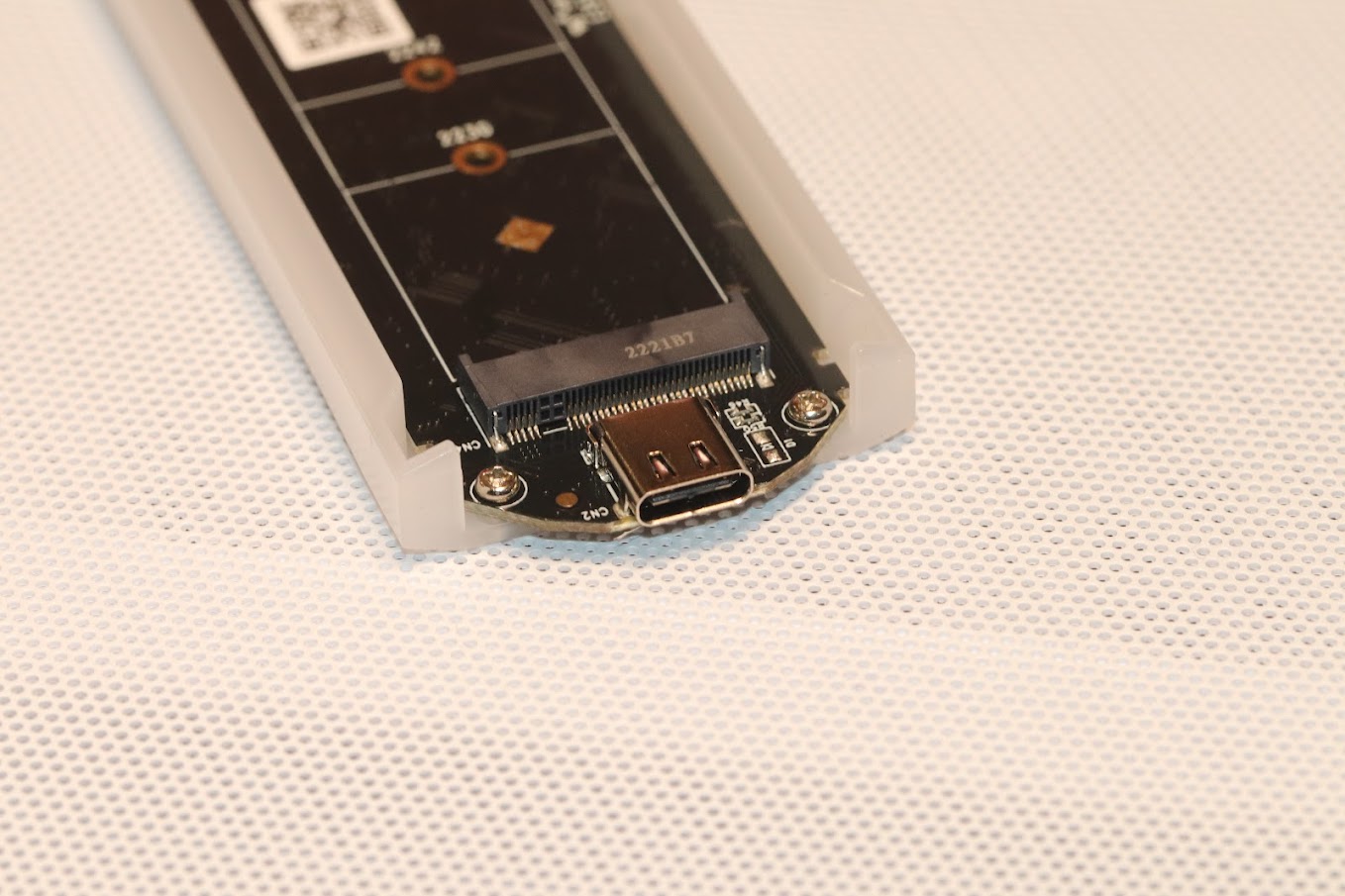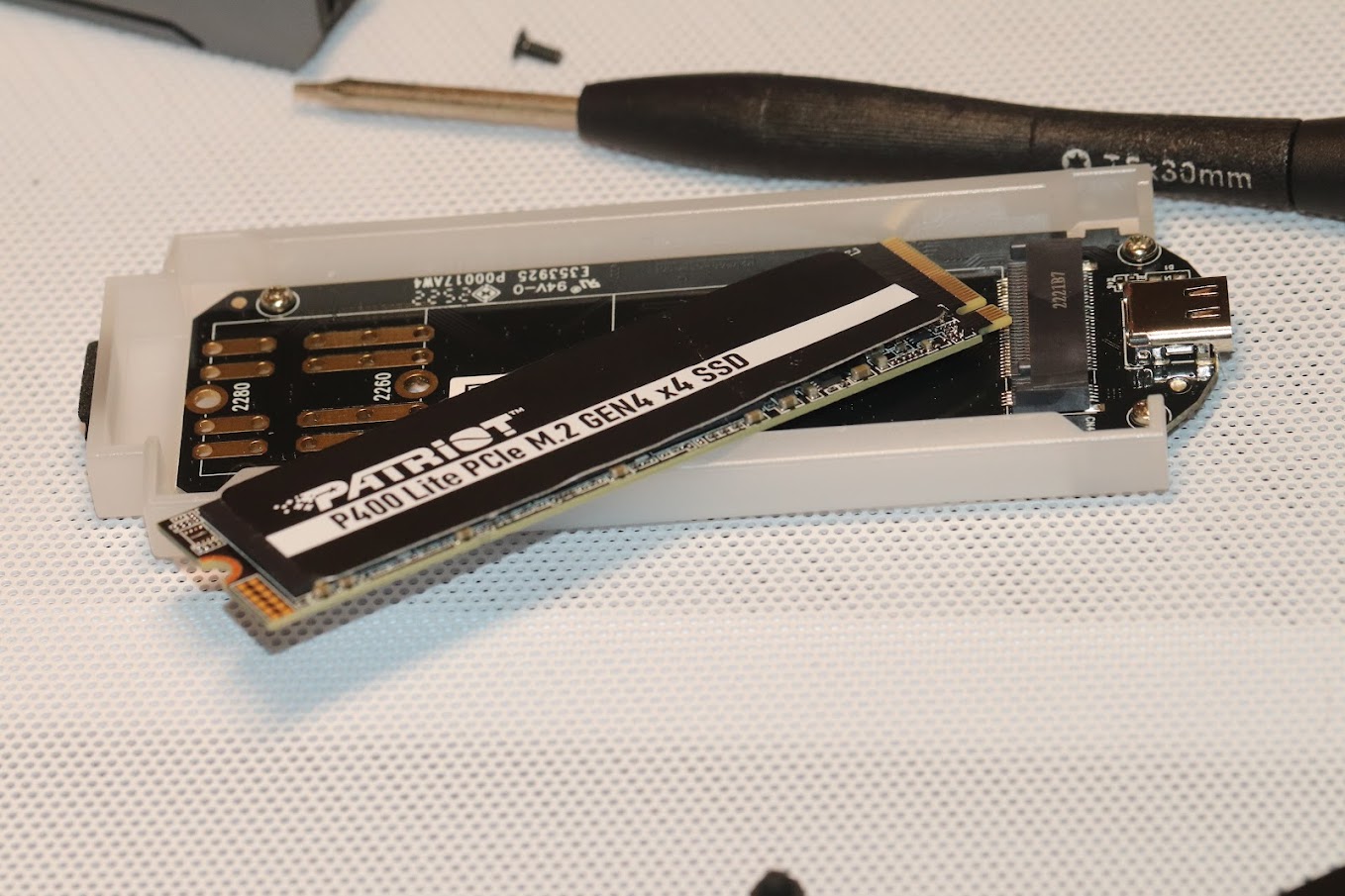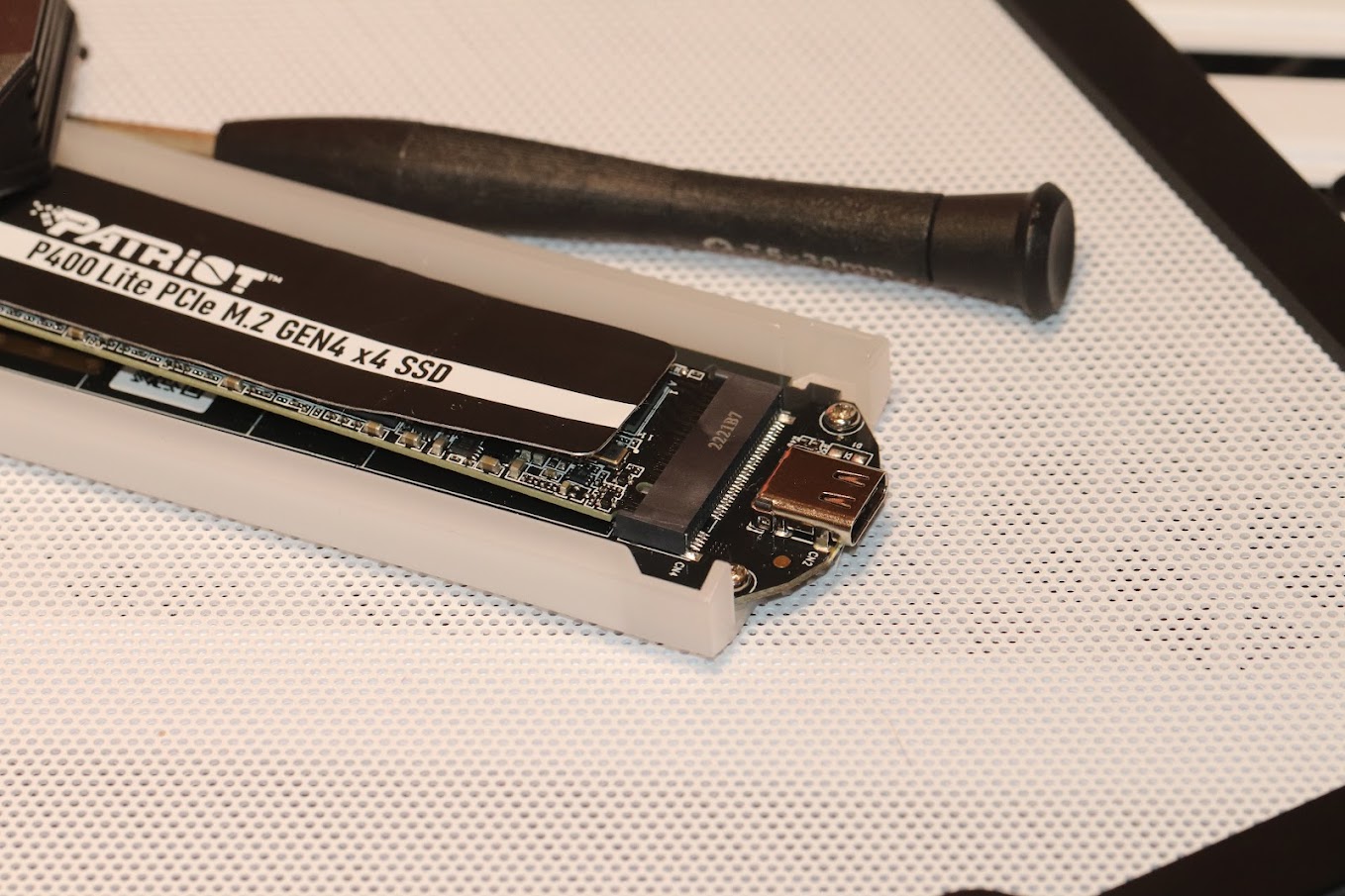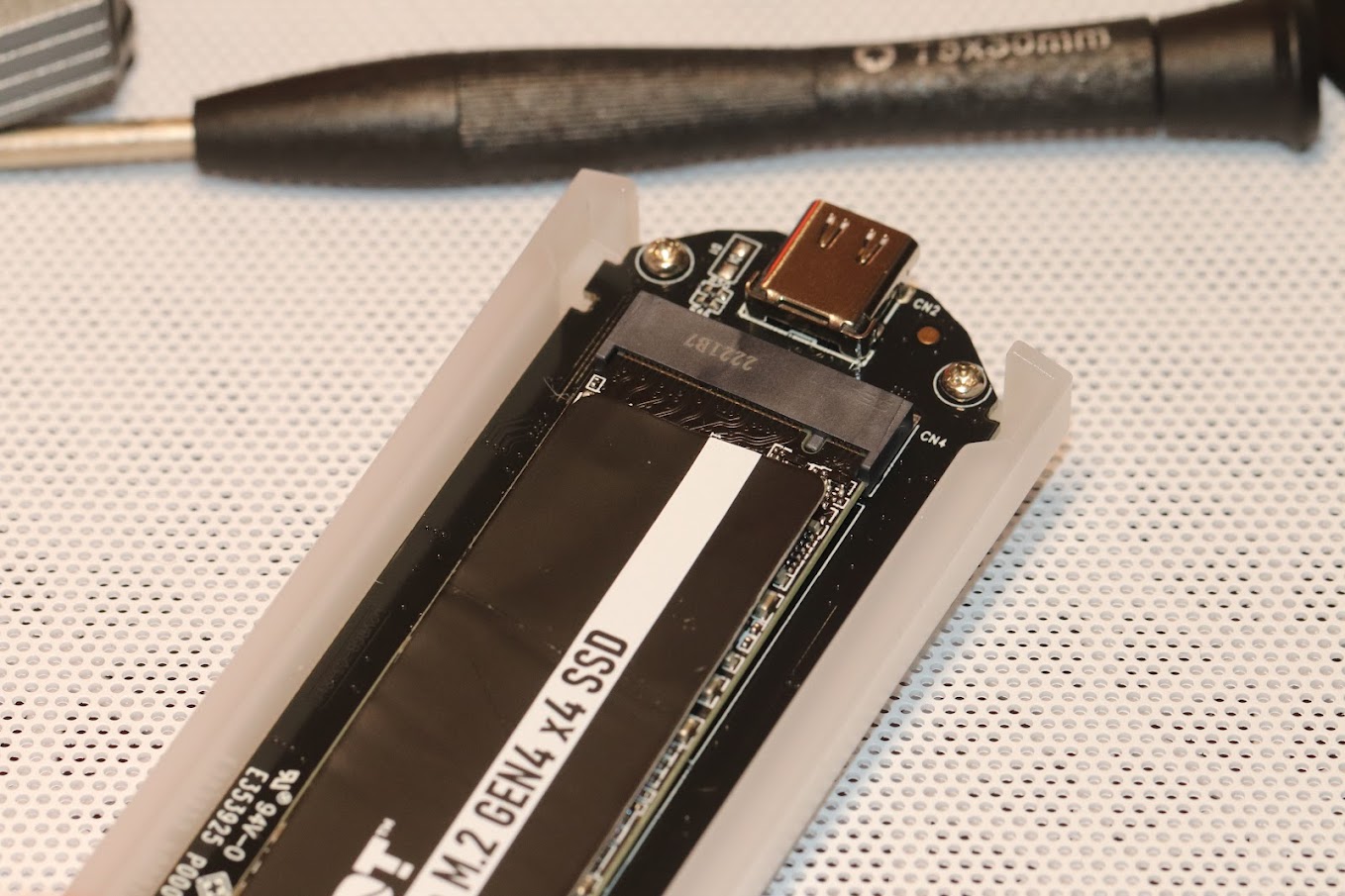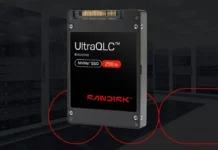The Patriot Viper Gaming VXD M.2 PCIe RGB SSD Enclosure is a stylish high-speed metal pocket that allows users to create an external M2 SSD. How good is the solution and what else is interesting? All the answers are further in the review.

The box
But let’s talk about everything one by one. The user will receive the product in a compact black cardboard box. On top of the package there is a stylish multicolored case with a detailed illustration of VXD and a considerable amount of various information about the model’s capabilities and features. We will dwell on this data in detail in the next section of the review.

Information from the box walls
One of the most notable “things” on the front is the hashtag #GAMERCERTIFIED. As for me, there is no need to explain what exactly it means. Its presence here is an extra proof that we are looking at an accessory that belongs to the game series – it will be comfortable to run games from this “machine” on your PC or laptop at the appropriate connection speed.

In addition, there is an RGB note on the front, the name of the product, and the logo of the PATRIOT gaming product family, called Viper.

Behind it is a passport in several languages, addresses of the manufacturer’s official pages in popular social networks and on You Tube, plus, of course, the global address of the PATRIOT Viper website, as well as a note on PC and MAC compatibility and much more.
The box contents
So, having familiarized ourselves with the box itself and the data on its walls, let’s now take a look at the model’s package. So, what’s inside:
VXD pocket; USB-C cable (with USB-A adapter); screwdriver; additional screws; metal heat sink or radiator – as you like; thermal pad.
There is no quick start guide as such in the box, but I personally do not see any problems in this, because in our case the installation procedure itself is an intuitively simple “thing” and is unlikely to cause difficulties, including for a user without the appropriate knowledge and skills. As for the warranty documentation, everything is traditional – a receipt certifying the official purchase.
PATRIOT Viper Gaming VXD specifications
- Interface – Type-C USB 3.1 Gen 2;
- compatibility – M.2 PCIe NVMe;
- supported SSD form factors – M.2 2230 M.2 2242, M.2 2260, M.2 2280;
- maximum drive capacity – up to 2 TB;
- case material – aluminum;
- dimensions – 110x43x13.8 mm;
- weight – 58.6 g.
Case materials
The PATRIOT Viper Gaming VXD M.2 PCIe RGB SSD Enclosure is primarily a monolithic aluminum shell. The latter has an extremely cool design, which is complemented by an equally stylish RGB backlight. The corresponding LEDs are located around the perimeter of the bottom panel of the control board, and if the device is not connected, you won’t even notice them. By the way, the board itself inside the already mentioned shell is “planted” on a plastic base and fixed with miniature screws.
Given the presence of a metal heat sink included in the package and the through side ribs plus slots on the top panel, personally I find this format interesting from any point of view.
The part of the body that has the Type-C interface and the opposite part is plastic. Against the background of metal, in my opinion, plastic inserts are not a losing decision – the arguments in favor of this are below.
Build quality
First of all, let’s talk about the plastic on the outside of the case. There are two pieces on smaller or vertical edges – whoever likes it best. One of them is not removable and is fixed with a special glue. The other, which has a slot for a USB Type-C port, is fixed with a screw. Are these elements any weaknesses in the case? In my opinion, no, because there is no load on them, they are perfectly fixed, and besides, they are “recessed” from the level of the metal ribs.
The control board with all the necessary components inside the metal part of the case is fixed on a milky-colored plastic base. The purpose of such a solution is to protect the diode base from damage, and in addition, due to its density, it is much more reliable to place the board with the media inside.
In short, I personally appreciated it. Fixing the board on the mentioned plastic also did not raise any questions – four miniature screws do their job perfectly. There are no comments on the fastening of the external plastic flap either.
Ergonomics
The first thing worth noting here is the previously mentioned slots on the edges and top of the case. They are necessary for the LED operation. Personal impressions – it’s done mega-wonderfully – the severity and even some aggression of the forms, the predatory stance, and I would even add charisma are emphasized very well.
In addition to the slots, the top panel contains the name of the accessory, as well as the manufacturer’s logo and emblem.
Everything related to the “look for” marking is on the opposite panel. There is also a small hole with an internal thread for a screw to fix the removable plastic flap.

It’s easy to understand how the USB Type-C interface is implemented/placed after looking at a few illustrations for the review – the format is absolutely classic.
Implementation of the backlight
I mentioned above that the RGB backlighting implemented here is surprisingly good and emphasizes the style of the pocket chosen by the manufacturer. Yes, the user can’t customize the backlight, although this can hardly be called a disadvantage, because competitors don’t have such an “option” either.
In principle, the backlight color is selected randomly by the system, and, for example, during data transfer to/from the media, the backlight can be white, light green, and so on. Its format depends on two “things” – whether the media is being written/read from or idle. In the first case, we have a rather intense blinking, and in the second case, a slow color shimmer.
Model features
- Elegant and stylish design with RGB backlighting;
- aluminum construction with improved heat dissipation;
- support for multiple platforms;
- support for M.2 SSD sizes, 2230/2242/2260/2280; USB 3.2 Gen 2 support;
- read and write SEQ speeds up to 1000 MB/s;
- support for capacities up to 4 TB inclusive.
Installation
The manufacturer provides everything you need to install the media in your pocket, and the procedure itself is not complicated, even if it is your first experience with the PATRIOT Viper Gaming VXD M.2 PCIe RGB SSD Enclosure.
Test bench
The PATRIOT Viper Gaming VXD M.2 PCIe RGB SSD Enclosure was tested in the company of the Patriot P400 Lite 1TB SSD (P400LP1KGM28H), which we reviewed a little earlier.
The test rig is as follows:
- motherboard – ASUS PRIME B660-PLUS D4 (90MB18X0-M1EAY0);
- processor – Intel Core i5-12400F 2.5GHz/18MB (BX8071512400F) s1700 BOX;
- RAM – Goodram IRDM X 2×8 GB;
- HDD – Western Digital Blue 1TB;
- video card – MSI GeForce GTX 960;
- Deepcool DQ750ST power supply.
SEQ read and write speeds of up to 1000 MB/s are claimed. Below are our results. Well, as you can see, we managed to achieve the above figures.

Expert opinion
In the end, we have a great solution for users who have an M2 SSD (in one of the above sizes) and want to reincarnate it in an interesting way. This product has a sturdy metal case, excellent RGB backlighting, support for models up to and including 4 TB, speed, and of course, a very extraordinary design.
The Patriot Viper Gaming VXD M.2 PCIe RGB SSD Enclosure costs 1270 UAH (35 USD).

